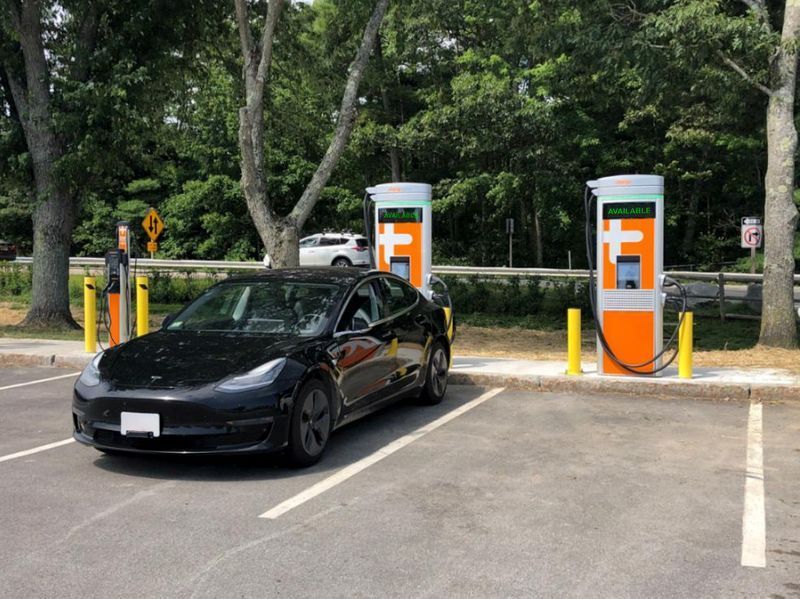Read The Full Article On: Businesswire
The global lightweight materials for EV market is expected to witness a CAGR of 26.97% during the forecast period
The environmental standards regarding the carbon dioxide emissions laid down by the governments across various countries have led to an increasing need for decreasing the weight of the vehicle for improving its efficiency and reducing CO2 emissions, thus propelling the demand for lightweight materials.
The global lightweight materials for the EV market is expected to account for a market volume of 10,906.5 kilotons by the end of 2025. The market is expected to witness high growth due to the wide adoption of electric vehicles and the rising need for increasing the range and efficiency of the vehicle.
Impact of COVID-19
The automotive industry, in particular, has borne the brunt of the pandemic, owing to the ongoing lockdown, the decrease in sales, and the impending apprehensions to invest in future ambitious projects. A sharp decline in global automotive trends has been witnessed in the first four months. However, the sales of electric vehicles can pick up pace in China and in various countries of Europe from the second half of 2020, as these countries emerge out of the lockdowns. China also aims to further scale up the reduced incentives to negate the effect of the pandemic.
Scope of the Global Lightweight Materials for EV Market
The global lightweight materials for EV market research provides a detailed perspective on the different types of lightweight materials, their applications, value, and volume estimation, among others. The principal purpose of this market analysis is to examine the lightweight materials industry outlook for EV batteries in terms of factors driving the market, restraints, trends, and opportunities, among others.
The report further considers the market dynamics (drivers, restraints, and opportunities), supply chain analysis, and the detailed product contribution of the key players operating in the market. The global lightweight materials for EV market report is a compilation of different segments, including market breakdown by product type, application, region, and country.
Market Segmentation
The global lightweight materials for the EV market, based on product type, has been segmented into metal and alloys, composites, and plastics and elastomers. The metal and alloys segment is further sub-segmented into HSS, aluminum, and others. The plastics and elastomers segment is further segmented into polypropylene(PP), acrylonitrile butadiene styrene (ABS), polyurethane (PUR), and others. The metal and alloys segment is expected to maintain its dominance during the forecast period in the global lightweight materials for the EV market.
The global lightweight materials for the EV market, by propulsion type, has been segmented into BEVs, PHEVs, and HEVs. The BEVs segment dominated the global lightweight materials for EV market in 2019 in terms of volume and is expected to maintain its dominance through the forecast period.
Based on the region, the global lightweight materials for EV market for EV batteries has been segmented into Asia-Pacific & Japan, Europe, U.K., China, North America, and Rest-of-the-World. Each region is further segmented into countries. Data for each of these regions and countries is provided by product type and propulsion.
Key Topics Covered:
1 Markets
1.1 Industry Outlook
1.1.1 Trends: Industry Dynamics Defining the Future Trends in EVs
1.1.2 Supply Chain Analysis
1.2 Ecosystem/Ongoing Programs
1.2.1 Consortiums, Associations, and Regulatory Bodies
1.2.2 Government Initiatives
1.3 Business Dynamics
1.3.1 Business Drivers
1.3.1.1 Increasing the Range of EVs
1.3.1.2 Stringent Emission Regulations
1.3.1.3 Government Initiatives Promoting Light Weighting
1.3.2 Business Challenges
1.3.2.1 High Cost of Lightweight Materials
1.3.2.2 Complex Recycling and Maintenance of Lightweight Materials
1.3.3 Business and Corporate Strategies
1.3.4 Business Opportunities
1.3.4.1 Growth in Emerging Economies
1.3.4.2 Development of Recycling Technologies for Plastics
2 Applications
2.1 Global Lightweight Materials for EVs Market – Application and Specification
2.1.1 Global Lightweight Materials for EV Market, by Propulsion type
2.1.1.1 Battery Electric Vehicle (BEV)
2.1.1.2 Hybrid Electric Vehicle (HEV)
2.1.1.3 Plug-in Hybrid Electric Vehicles (PHEV)
2.1.2 Global Lightweight Materials for EV Market, Product (by Application)
2.1.2.1 Metal and Alloys (by Application)
2.1.2.2 Composites (by Application)
2.1.2.3 Plastics and Elastomers (by Application)
2.2 Demand Analysis for Lightweight Materials for EVs Market (by Application), 2019-2025
2.2.1 Demand Analysis for Lightweight Materials for EVs Market (by Propulsion Type), 2019-2025
2.2.1.1 Battery Electric Vehicles (BEVs)
2.2.1.2 Hybrid Electric Vehicles (HEVs)
2.2.1.3 Plug-in Hybrid Electric Vehicles (PHEVs)
2.2.2 Demand Analysis for Lightweight Materials for EVs Market (Product Type, by Application), 2019-2025
2.2.2.1 Metal and Alloys (by Application)
a. Body
i. Body in White
ii. Closures
b. Suspension
c. Transmission System
2.2.2.2 Composites (by Application)
a. Body
b. Suspension
2.2.2.3 Plastics and Elastomers (by Application)
a. Body
i. Closures
ii. Bumpers
iii. Others
b. Interior
i. Instrument Panel
ii. Seats
iii. Center Console
3 Products
3.1 Global Lightweight Materials for EVs Market – Products and Specifications
3.1.1 Metal and Alloys
3.1.1.1 High-Strength Steel
3.1.1.2 Aluminum
3.1.1.3 Others
3.1.1.3.1 Magnesium
3.1.1.3.2 Titanium
3.1.1.3.3 Beryllium
3.1.2 Composites
3.1.2.1 Carbon-Fiber-Reinforced Polymer (CFRP)
3.1.2.2 Glass-Fiber-Reinforced Polymer (GFRP)
3.1.3 Plastics and Elastomers
3.1.3.1 Polypropylene (PP)
3.1.3.2 Polyurethane (PUR)
3.1.3.3 Acrylonitrile Butadiene Styrene (ABS)
3.1.3.4 Others
3.2 Demand Analysis of Lightweight Materials for EVs Market (by Product Type), 2019-2025
3.2.1 Global Lightweight Materials for EVs Market (by Product Type), Value and Volume Data, 2019-2025
3.2.1.1 Metals and Alloys
3.2.1.2 Composites
3.2.1.3 Plastics and Elastomers
3.3 Product Benchmarking: Growth Rate – Market Share Matrix
3.3.1 Opportunity Matrix, by Region
3.3.2 Opportunity Matrix, by Product Type
3.4 Technology Roadmap
4 Regions
5 Markets – Competitive Benchmarking & Company Profiles
5.1 Competitive Benchmarking
5.2 Company Profiles
5.2.1 SSAB AB
5.2.2 Toray Industries, Inc.
5.2.3 ArcelorMittal S.A.
5.2.4 SABIC
5.2.5 ThyssenKrupp AG
5.2.6 Solvay S.A.
5.2.7 SGL Carbon SE
5.2.8 Covestro AG
5.2.9 DuPont de Nemours, Inc.
5.2.10 Celanese Corporation
5.2.11 Novelis Inc.
5.2.12 Nippon Steel Corporation
5.2.13 BASF SE
5.2.14 LyondellBasell Industries Holdings B.V.
5.2.15 Constellium SE

